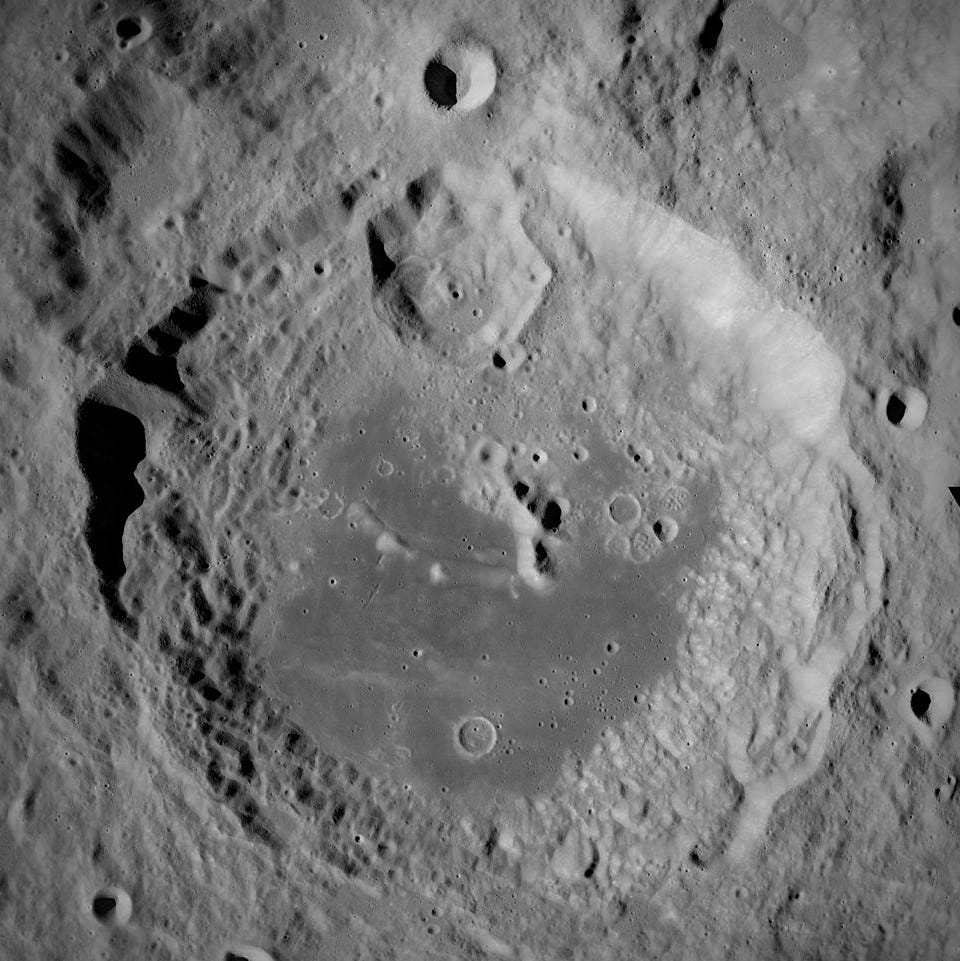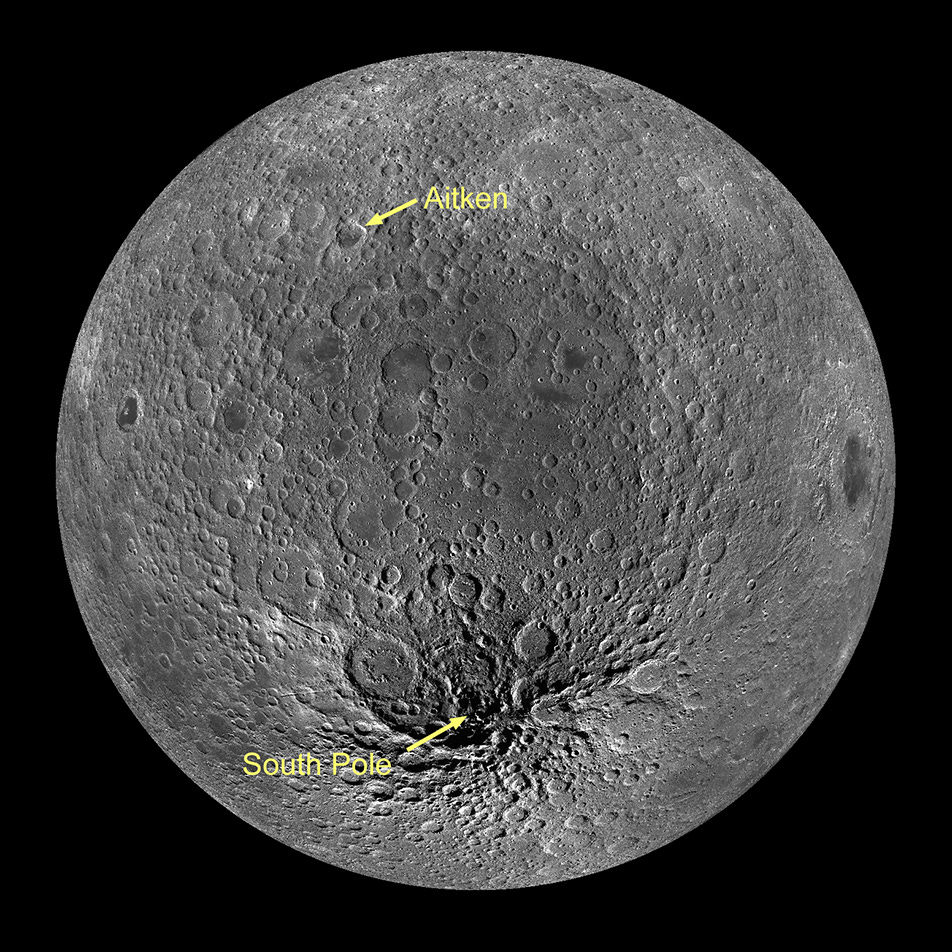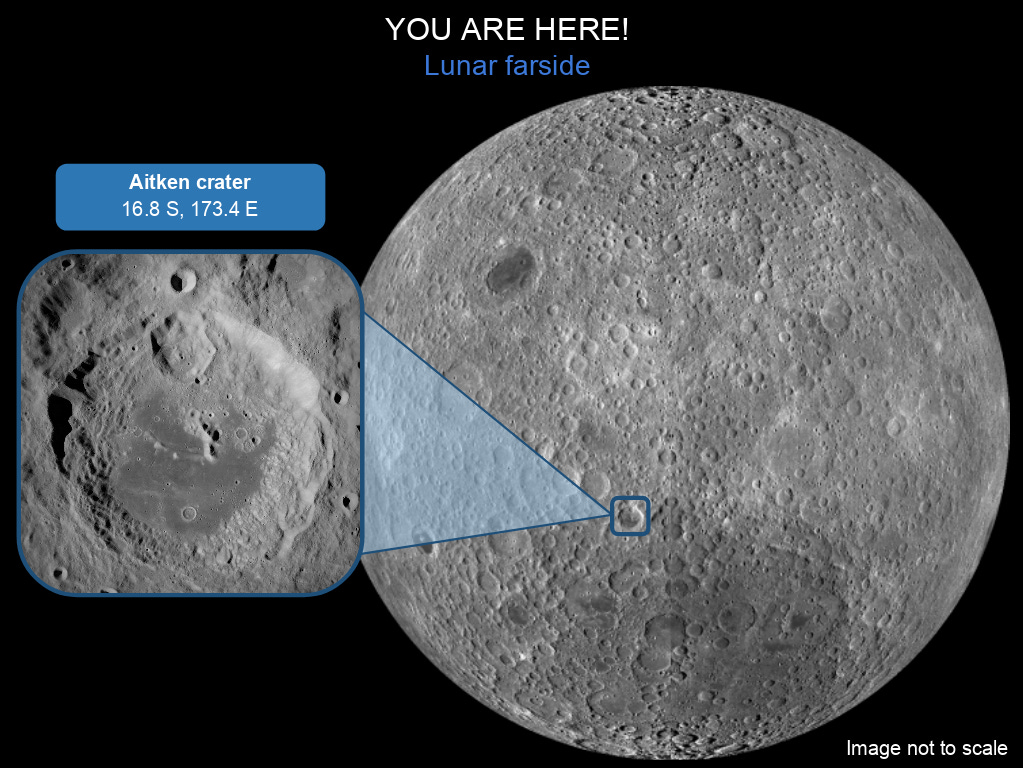The dynamic terrain of Aitken crater
Seen here is the large Aitken crater on the farside of the Moon, hosting a complex array of terrain features.

Aitken crater stretches 135 kilometers across and is 6 kilometers deep. Like the previously covered Aristarchus, it has an arc-shaped (near) central mountain. The other prominent feature of Aitken is the large north-side pentagon-shaped crater inside it.
Presence of multiple craters inside Aitken along with lack of visible ejecta outside hint to the crater’s old age. Since its formation, the interior has been resurfaced by lava during the time of active volcanism on the Moon, which is why it’s mostly flat and smooth.
Aitken's lava-riddled interior has plenty of wrinkled ridges, raised terrain caused by mechanical or thermal compression in the soil, like in the case of Dorsum Zirkel. Several rilles also run on the floor, in addition to the presence blocky craters, scattered boulders and swirls.
The Aitken crater is one of the two extremes that define the South Pole-Aitken Basin (SPA), one of the solar system's largest, deepest and oldest impact basins. The Chinese lander Chang’e 4 landed within the SPA, in the Von Kármán crater.

Given the rich geology of the Aitken crater and its relation to the SPA, NASA chose it as a landing site for the Constellation Program. Landing in Aitken crater will unravel happenings in the lunar past.

